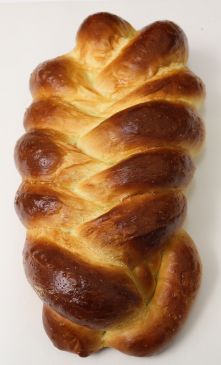Forum Replies Created
-
AuthorPosts
-
Corned beef is something I prefer to buy from the deli, pre-sliced. I've made it a few times, but it is a lot of work and, frankly, not as good as the stuff from the deli.
Hand sanitizers haven't been proven to be all that effective against covid-19, good old soap and water is still better.
There was plenty of toilet paper at the stores when I was there a couple of days ago, too, but not last night. It doesn't take a lot of people to clean a store out of something if they start buying it in much larger quantities than normal. A friend of ours was at a different grocery store yesterday and she said people were buying it by the cart-full.
Our house has 6 bathrooms, so we tend to buy 2-3 packages at a time in normal times.
I went to the grocery store this evening and they were basically out of toilet paper. I didn't check for things like hand sanitizer, but I suspect it was in low supply as well.
Fortunately, the things I was looking for were not in short supply.
We could eat out of the freezer and pantry for quite a while, too, though the menu might get kind of boring without fresh fruit, vegetables, meats and dairy. But I think we could make sure we get all 9 essential proteins and other important nutrients.
Given that honey is about half fructose, which caramelizes at a lower temperature than sucrose, I don't think the honey was why it didn't brown. If anything, baked goods with honey tend to brown more.
Are they fully done on the inside?
I have an ifrared thermometer, I find it is a much better way of testing oven temperatures, just point it at the sidewalls in a few places.
One of the recipes that I used for a sour cream raisin pie had you boil the raisins in some water to plump them. It also used some of the raisin water in the pie filling.
Raisins have to be REALLY dried out not to be salvageable for baking.
Now that I'll be home for Pi day (Saturday), I need to figure out what kind of pie(s) to make.
Here's an interesting article on Jewish traditions and baking. I don't recall having seen the part about needing to be the equivalent of 43 1/5 eggs before, that's kind of an unusual number, but it looks like it takes 2 1/2 pounds of flour before Jews have to 'take challah' or set aside a portion as a sacrifice. The stuff about classes might be useful for you. Of course, my dough wouldn't qualify anyway.
I made that one pretty easy, it gets more complicated if you throw in ingredients like eggs, honey or even butter, all of which have some water in them. Even the experts don't always agree on how to compute hydration for those doughs.
My BBGA sourdough class has been postponed because of Covid-19 measures at the venue. Not sure when they'll reschedule it or if I'll be available then. :sigh:
Well, when you make 3 1/2 pounds of dough, like I did yesterday, you probably won't eat it all, though I'm trying!
My braiding was not the best, but it tastes pretty good. I tried making some salt dough but it doesn't have the same tensile strength as real dough so it falls apart and won't braid. I tried using some modeling clay, it was too stiff. Guess I'll just have to keep making doughs I can braid. :sigh:
We wound up having mac and cheese.
If you're having trouble with pictures, I really recommend the IrfanView program for Windows PCs. I tend to shoot at 6000x4000 pixels then reduce to 600x400 before any cropping. Takes less than a minute to get a photo ready for uploading, less time than it takes to transfer the photos from my camera to my computer.
Here's the nicer of the two 6 strand 'herringbone' pattern Challah, the one on the left in Hamelman's book. Not a perfect job of braiding, it is sort of falling off to one side, but it is quite soft. It tastes like Challah, a little eggy, a little sweet. Should make great French toast.
The nice looking loaf will go to a friend who doesn't think she's ever had Challah before, the others will mostly go into the freezer here.
Attachments:
You must be logged in to view attached files.For one of the pictures you posted the other day only the top half shows up in your post, but if you click on it, you get the full image. Haven't seen that before, you must be WordPress's nemesis. (I've 'broken' so many programs over the years that I've actually gotten kicked out of the testing programs at some companies, although there was one company that actually gave me the internal number for their development team, so I wouldn't have to work my way through the usual support filters.)
-
AuthorPosts
